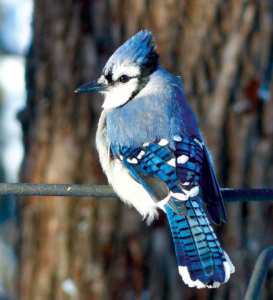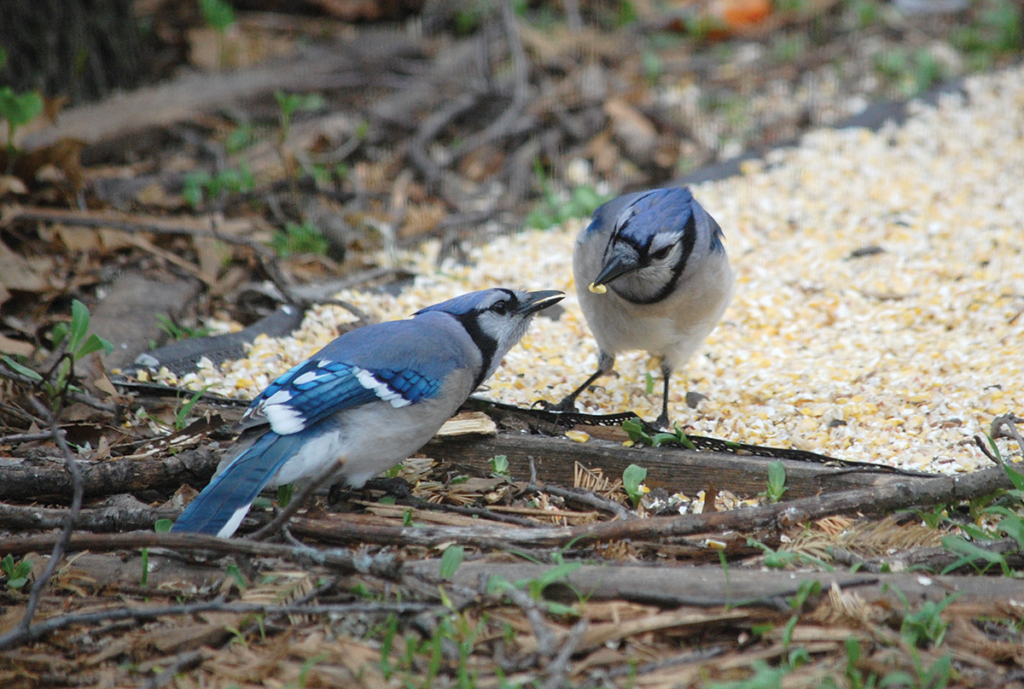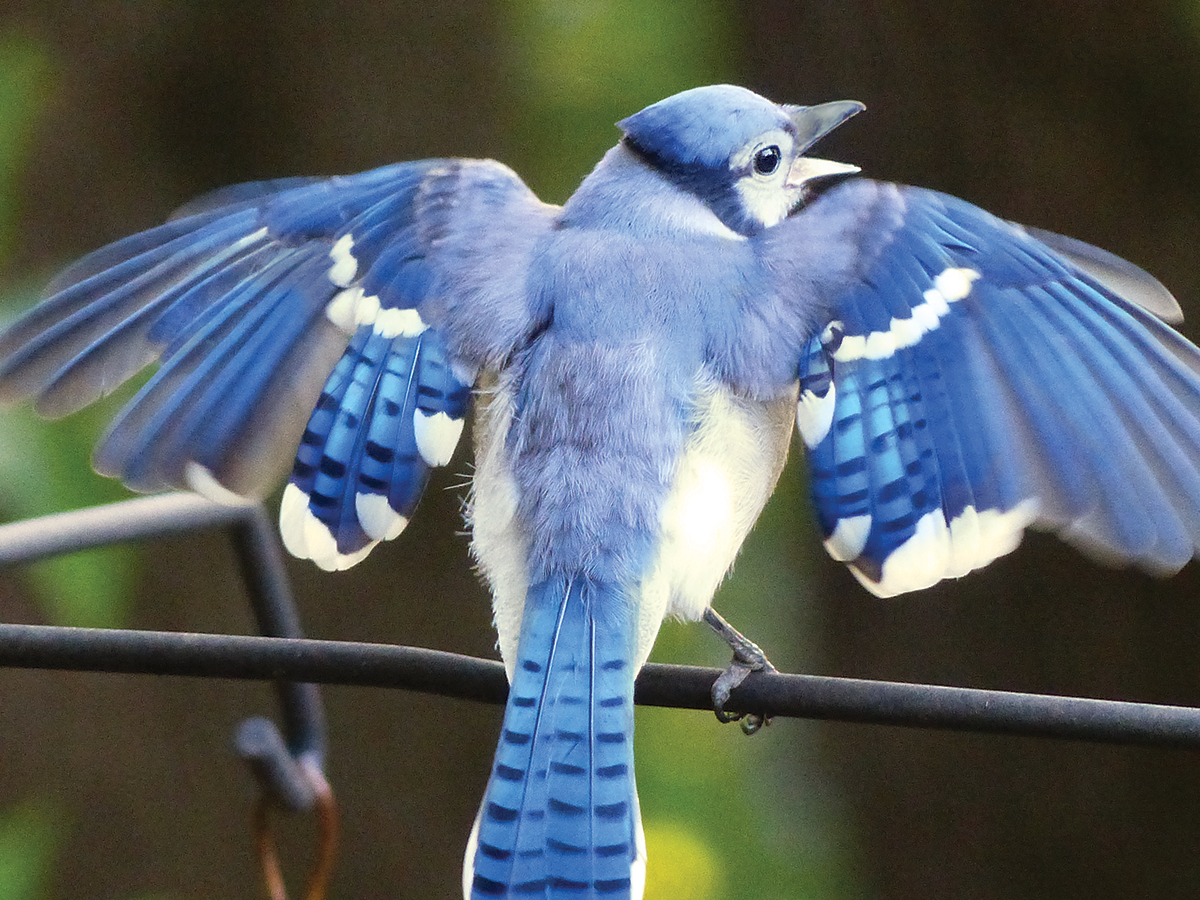The Blue Jay is one of our loudest and most colorful backyard songbirds. The mighty jay is fearless, great at mimicking and an outstanding survivalist known for intelligence, complex social systems and tight family bonds. Here are some insights into the life and habits of this gregarious species.

That Amazing Color and a Fantastic “Mohawk”
This large-crested bird has various shades of blue, black and white feathers. The black across the face, nape and throat varies among Blue Jays and may help them recognize one another. Like other crested birds, Blue Jays can raise or lower their crest depending on their mood (the “crest” is that Mohawk-like spike at the top of their heads). Blue Jays will lower their crest when they are feeding with family or tending to nestlings. When a Blue Jay squawks, the crest is always held up, reflecting heightened aggression.
Courtship
It’s hard to tell the difference between the male and female Blue Jay. Females tend to be a bit smaller in size, but it’s hard to distinguish the relative size on individual birds. Observation of behavior is the only positive way to identify the different sexes. During courtship, females drive male behavior: when the female flies away, the males follow; when the females land, the males land. The males will then bob their heads and fluff their feathers in order to impress the female. Often the male Blue Jay feeds the female. In nesting, both sexes start building the nest, but the female usually finishes it and will do most of the incubating. The male will bring food to the nesting female.

Habitat
Blue Jays are birds of the forest edges, often seen near oak trees in forests, woodlots, towns, cities and parks. A Blue Jay nest is a bulky open cup made of twigs, grass, bark strips and moss; it is often held together with mud. The nest is lined with other fine materials and frequently decorated with paper. Nests are usually found in the V-shaped branch connections of trees, usually 8–30 feet above the ground.
Vocalizations
Blue Jays become very quiet when around their nest, but when a predator threatens the nest they use their loud, raucous calls that can be heard across long distances. Here’s an example we found from YouTube user, Pinto the Chihuahua, that shows a Blue Jay brazenly irritating a hawk with vocalizations and aggressive movements:
Other species also benefit from the Blue Jay’s alarm call, alerting them to a nearby predator. Blue Jays frequently mimic the calls of other birds, usually hawks. This seems to be to warn other Blue Jays of the presence of a hawk or, as I’ve witnessed, scare the other birds away from my feeders so the Blue Jay can feast alone!
Attracting
Blue Jays are omnivorous, eating mostly seeds, nuts and berries. Blue Jays often stuff food in a throat pouch, called a “gular pouch,” to then hide somewhere else. They’ll eat spiders, snails, small rodents and carrion. Blue Jays will come to feeders serving Joe’s Mix, Cabin Mix, Kracker Jax, Oilers, peanuts (in-shell or pickouts), and medium sunflower chips. They prefer to feed from the ground, but will also come to almost any seed or suet feeder.
By Wayzata Manager MELISSA BLOCK
Originally published in the November/December 2015 Bird’s-Eye View Newsletter


